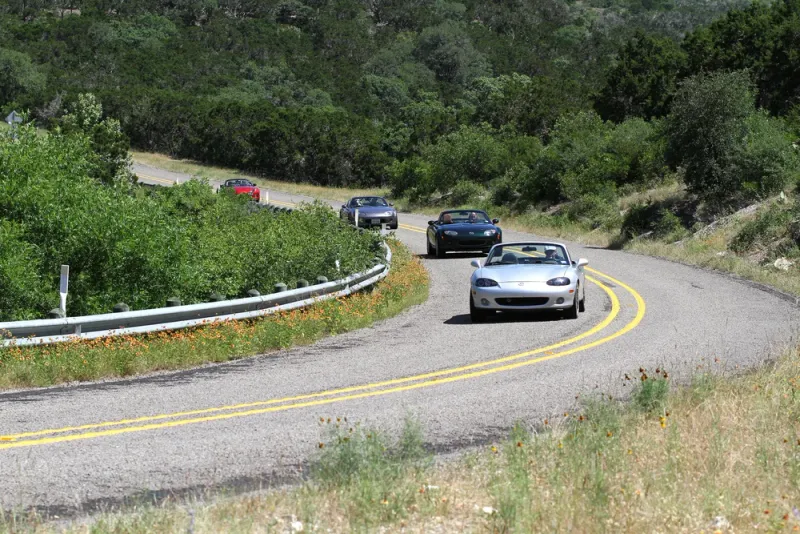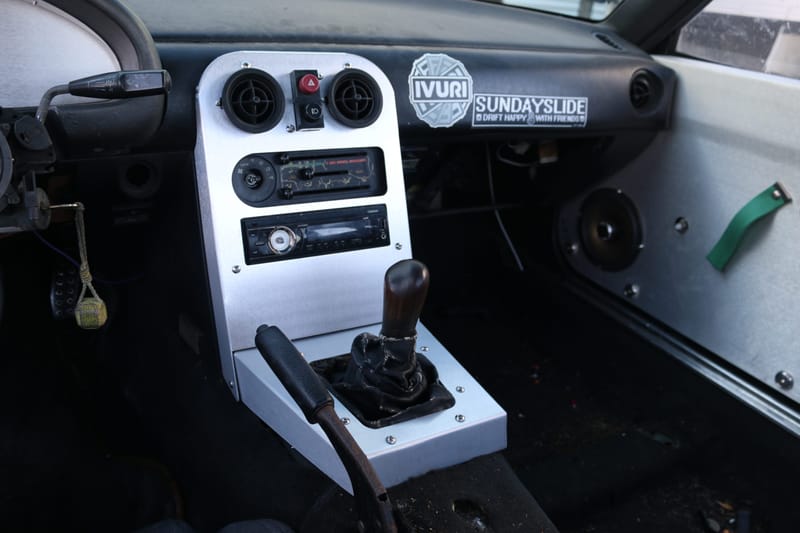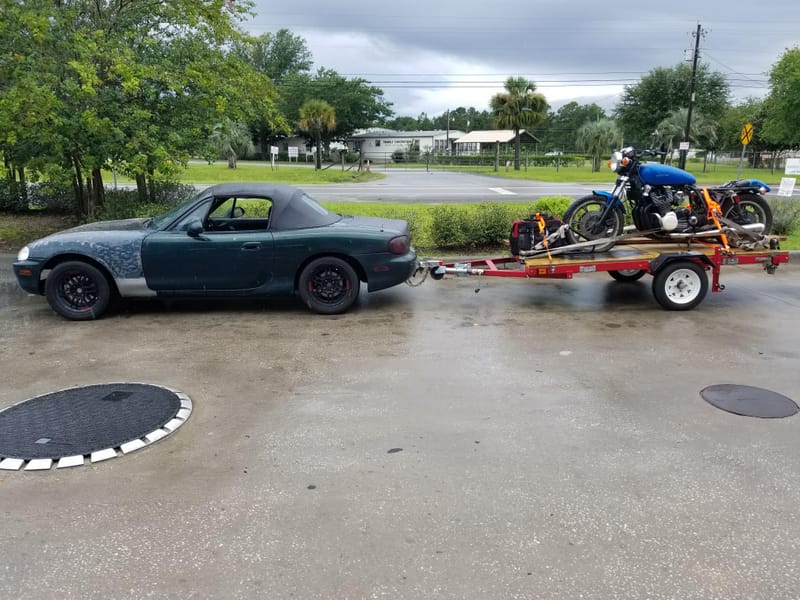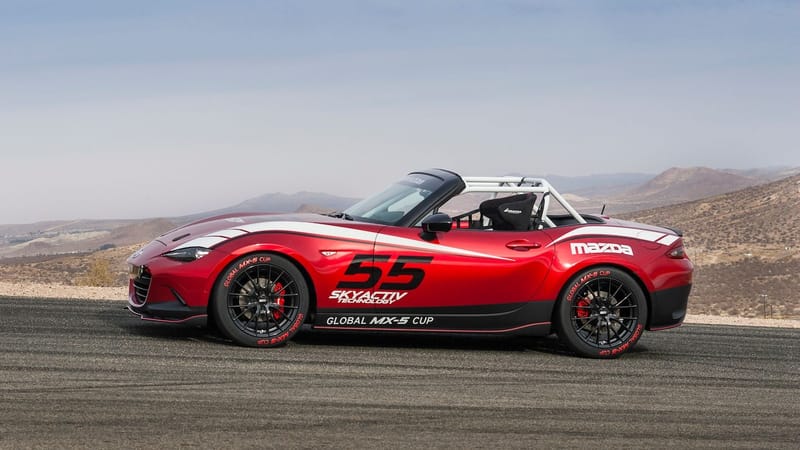Miata Camping & Road-Trip Hacks
Packing for multi-day trips in a Miata takes creativity, but it’s doable. With smart gear choices—compact tents, soft bags, trunk racks, and seatback organizers—you can turn the little roadster into a surprisingly capable adventure car.
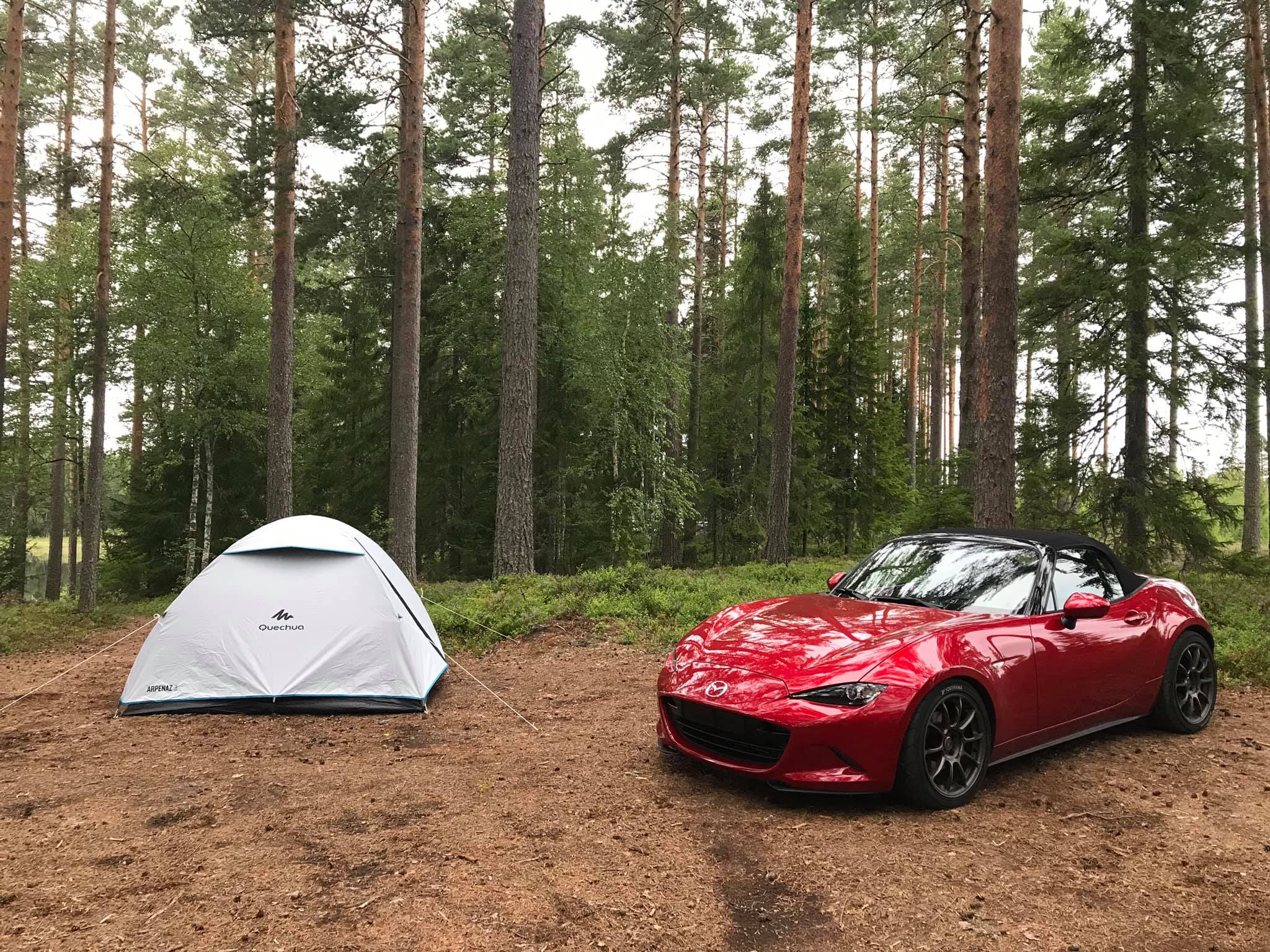
For adventurous owners squeezing multi-day trips (and camp gear) into a two-seat roadster.
Knowing Your Space
Even tiny trunks differ a bit across Miatas. ND soft tops give you about 4.59 cu ft, while the RF has roughly 4.48 cu ft and a noticeably tighter opening, think around 30 by 13.5 inches, so flexible bags are your friend. The NC is the quiet hero at roughly 5.3 cu ft, and the roof position doesn’t change the trunk volume, which is rare for a roadster. The NB sits around 5.1 cu ft. On NDs, don’t forget the small lockable bins behind the seats; they’re perfect for tools, first-aid, a plug kit, and a compact pump. Whatever you drive, pack to the payload on your door-jamb sticker (you + passengers + cargo), not just “whatever fits.” It keeps the car happy and handling predictable.

Pack Like a Backpacker, Not a Car Camper
Take the ultralight mindset and you’ll win. Swap the Big Four, shelter, quilt/bag, pad, pack, for lighter versions and you’ll slash bulk fast. A 30–50 L backpack per person is plenty for one to three nights if you choose compact gear. For shelter, run a one-person tent, a tarp/bivy, or a hammock kit. For sleep, a compact pad plus a 30–40°F quilt/bag covers three seasons. For cooking, bring a pocket canister stove and a small pot, and never cook inside the car or tent. Pack heavy, dense items low and near the axle line, then let softer stuff fill the voids like Tetris. A simple comfort rule: aim for an individual carry of about 20% of body weight or less.
Use Soft Bags, Not Hard Cases
Curvy trunks and narrow apertures punish hard suitcases. Soft duffels and packing cubes “mold” around hinges and trim, slide through the RF’s smaller opening, and let you fill corners you’d lose to rigid shells. Pre-stage your gear by category, sleep, cook, clothes, tools, then load firm rectangles first, flexible bags next, and finish with small fillers.

Add External Cargo, Safely
When you truly need more room, deck-mounted trunk bags and racks can add roughly 50–75 liters (about 1.75–2.65 cu ft) of waterproof space. They’re great for tents, quilts, and camp chairs; just protect your paint and keep rear visibility in check. A Class-1 hitch on later cars is typically rated around 200 lb tongue weight and works well for a small cargo tray or bike rack. Keep loads conservative because leverage on a tray reduces what’s truly safe, and watch ground clearance if you’re lowered. Make sure tail lamps and the plate remain visible, and add auxiliary lighting if your load blocks the third brake light. Most important: Mazda says not to tow a trailer with the MX-5, use a hitch only for carriers.

Smart Use of Cabin Nooks
On NDs, stash tools, first-aid, a headlamp, a tire plug kit, and a mini-compressor in the lockable behind-seat bins. Keep documents and small electronics up front, and put anything heavy low and central to preserve the car’s balance and steering feel.
Tires, Flats, and Roadside Reality
Modern Miatas trade a spare for a sealant-and-compressor kit. Add a proper plug kit and practice running the compressor before you leave. Replace the sealant when it expires, check tread depth and tire age, set pressures cold, and re-torque lugs after any tire service. Know where your wheel-lock key is before you’re stuck on the shoulder.
Sleep & Camp Setups That Actually Work
Skip in-car sleeping; the seats don’t go flat and it’s cramped. A small-footprint tent or a hammock kit is the move, with the car doing what it does best, getting you to great trailheads and camps. Go light on furniture and kitchen gear; compact chairs and a tiny cook kit beat “glamping” in a Miata.

Miata batteries are small, so don’t run fans or lights off the car while parked. Charge phones and headlamps from a power bank or small power station at camp, not from the 12V socket with the engine off. That little bit of discipline keeps you from waking up to a click-no-crank.
Sample Two-Night Packing Plan (Two People)
Run two soft duffels around 35–40 liters with cubes for clothes and toiletries. Bring an ultralight two-person tent, two compact pads, two quilts or bags, and thin pillows. Cooking stays minimal: a pocket stove, one 230 g fuel canister, one 900–1100 ml pot, two mugs, and a long spoon, with headlamps for camp chores. Food lives in a small soft cooler or insulated tote with quick resupplies every 24–36 hours so you don’t haul ice blocks. Safety and tools include a plug kit, compressor, basic tools, an OBD-II dongle, a compact jump starter, first-aid, and a paper map for no-signal zones. If you need overflow, put soft sleeping items in a deck bag and keep dense, heavy gear inboard.

Loading Order (What Goes Where)
Build the trunk from the bottom up: dense rectangles like the cook kit and tool roll on the floor, softer items like shoes and food totes down the sides, then the tent and fly in a loose sack up top so they puff into corners. Keep daypacks behind the seats and valuables in the lockable bins.
Quick Pre-Trip Checklist
Top up fluids, confirm belts, hoses, and wipers, set tire pressures cold, and make sure you know your lug-nut torque. Check that the sealant hasn’t expired and the compressor actually runs. Do the payload math so you stay within the sticker limit, and test external bags or racks for clearance while confirming that lights and plate stay unobstructed.
Reality Check: What to Skip
Don’t tow a trailer, leave big hard coolers, full camp kitchens, and lounge chairs at home; they eat your trunk and don’t add much joy on a two-night trip.
Custom-fit luggage sets shaped to the Miata trunk can squeeze every last cubic inch and make packing repeatable. For many owners, a lightweight deck bag reserved for sleeping gear plus a dialed-in trunk load is the sweet spot.
Treat the Miata like an ultralight backpack that happens to cruise at highway speed. Keep weight low and central, use soft luggage, add only the smallest external storage you truly need, and respect the no-towing rule. Do that, and a comfy two-night road trip in a roadster fits just fine.

